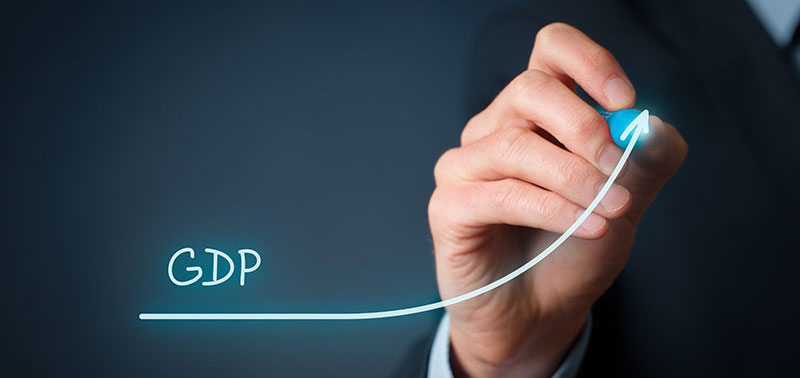Real gross domestic product (GDP) increased at an annual rate of 6.6% in the second quarter of 2021, according to the “second” estimate released Thursday by the Bureau of Economic Analysis. In the first quarter, real GDP increased 6.3%.
The second GDP estimate is based on more complete source data than were available for the “advance” estimate issued last month. In the advance estimate, the increase in real GDP was 6.5%. The update reflects upward revisions to nonresidential fixed investment and exports that were partly offset by downward revisions to private inventory investment, residential fixed investment, and state and local government spending. Imports, which are a subtraction in the calculation of GDP, were revised down.
The increase in real GDP in the second quarter reflected increases in personal consumption expenditures (PCE), nonresidential fixed investment, exports, and state and local government spending that were partly offset by decreases in private inventory investment, residential fixed investment, and federal government spending. Imports, which are a subtraction in the calculation of GDP, increased.
The increase in PCE reflected increases in services (led by food services and accommodations) and goods (led by “other” nondurable goods, notably pharmaceutical products, as well as clothing and footwear). The increase in nonresidential fixed investment reflected increases in intellectual property products (led by research and development as well as software) and equipment (led by transportation equipment). The increase in exports reflected an increase in goods (led by nonautomotive capital goods) and services (led by travel). The decrease in private inventory investment was led by a decrease in retail trade inventories. The decrease in federal government spending primarily reflected a decrease in nondefense spending on intermediate goods and services. In the second quarter, nondefense services decreased as the processing and administration of Paycheck Protection Program (PPP) loan applications by banks on behalf of the federal government declined.
Current dollar GDP increased 13.2% at an annual rate, or $693.2 billion, in the second quarter to a level of $22.73 trillion. In the first quarter, GDP increased 10.9%, or $560.6 billion. More information on the source data that underlie the estimates is available in the Key Source Data and Assumptions file on BEA’s website.
The price index for gross domestic purchases increased 5.8% in the second quarter, an upward revision of 0.1 percentage point. The PCE price index increased 6.5%, an upward revision of 0.1 percentage point. Excluding food and energy prices, the PCE price index increased 6.1%, unrevised from the advance estimate.
Real gross domestic income (GDI) increased 1.6% in the second quarter, compared with an increase of 6.3% (revised) in the first quarter. The average of real GDP and real GDI, a supplemental measure of U.S. economic activity that equally weights GDP and GDI, increased 4% in the second quarter, compared with an increase of 6.3% in the first quarter.
Profits from current production (corporate profits with inventory valuation and capital consumption adjustments) increased $234.5 billion in the second quarter, compared with an increase of $123.9 billion in the first quarter.
Profits of domestic financial corporations increased $53.7 billion in the second quarter, compared with an increase of $1.3 billion in the first quarter. Profits of domestic nonfinancial corporations increased $169.8 billion, compared with an increase of $133.2 billion. Rest-of-the-world profits increased $11 billion, in contrast to a decrease of $10.6 billion. In the second quarter, receipts increased $31.3 billion, and payments increased $20.3 billion.
Related Posts
-
Current dollar GDP increased 11% at an annual rate, or $566.3 billion, in the first…
-
The increase in real GDP in 2Q reflected increases in personal consumption expenditures (PCE), nonresidential…
-
The growth marks a steady improvement from the fourth quarter of 2021, when real GDP…






